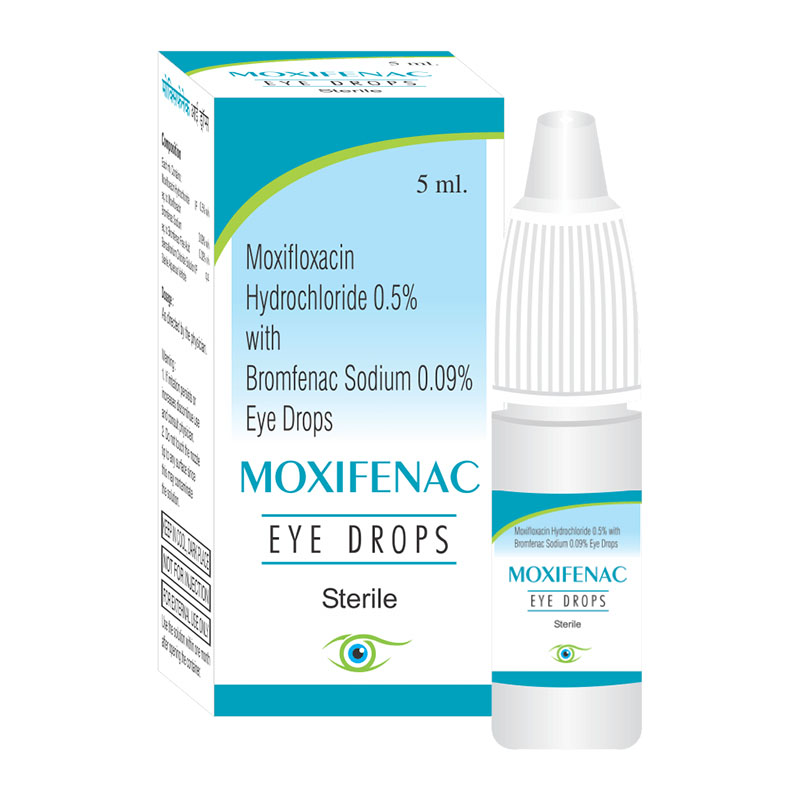Moxifenac (Eye Drops)
“Annihilates and Treats Bacterial Disturbances”
COMPOSITION-
Moxifloxacin hydrochloride 0.5%, Bromfenac Sodium 0.09%
Mode of Action:
MOXIFENAC constitutes of a 4th generation Fluoro-Quinolones, Moxifloxacin as an anti-bacterial agent and NSAID with Bromfenac as an anti- inflammatory agent.
Moxifloxacin hydrochloride is a synthetic 8-methoxyfluoroquinolone with a broad spectrum anti-bacterial effect on gram positive, gram negative and other anaerobic micro-organism. Being a Floro-Quinolones, exerts antibacterial effect by preventing bacterial DNA from unwinding and duplicating. Well tolerated with minimal ocular side effects and provides increased penetration into ocular tissues and fluids with improved activity against Streptococci and Staphylococci species. It has a moderate to excellent activity against clinically relevant, gram-negative ocular pathogens.
Fortified with an NSAID, MOXIFENAC invincibly treats the inflammation caused by the bacterial invasion in the eyes. Bromfenac (Bromine-NSAID, highly Lipophilic) gets released rapidly and sustainably across the corneal barrier then blocking the activity of COX enzymes (COX1 & COX2), responsible for catalyzing Arachidonic Acid to form mediators of inflammation (Prostaglandins and Thromboxane). Thus ultimately gives relief from the symptoms of inflammation and pain.
Treat Bacterial infection, inflammation and ocular pain-Post Cataract Surgery, Bacterial Conjunctivitis (pink eye), Bacterial Corneal Ulcer Infection, caused by the following susceptible strains:
- Corynebacterium species
- Micrococcus luteus
- Staphylococcus aureus
- Staphylococcus epidermidis
- Staphylococcus haemolyticus
- Staphylococcus hominis
- Haemophilus parainfluenzae
- Staphylococcus warneri
- Streptococcus pneumoniae
- Streptococcus viridans group
- Acinetobacter Iwoffii
- Haemophilus influenzae
- Chlamydia trachomatis
Instill a drop of MOXIFENAC in the eye(s) twice a day or as directed by the physician.
- NSAIDS are contraindicated to glaucoma patients.
- Use of topical NSAIDS may delay healing.
- Hypersensitivity towards any of the component in the solution.
- Growth of Resistant Organisms with Prolonged Use
- Avoidance of Contact Lens Wear
- If irritations persist, discontinue the use and consult the eye doctor.
Adverse Effect:
- Ocular hyperemia, Ocular pain and Ocular pruritus
- Nausea, Diarrhea, Dizziness, blurred vision that does not go away, burning, stinging, or itching of the eyes or eyelids.





